In the modern game, the goalkeeper’s role extends far beyond the traditional perception of simply “stopping shots.” At elite level, a goalkeeper must not only prevent goals but actively shape their team’s defensive structure and offensive rhythm. For scouts and analysts, identifying a goalkeeper capable of influencing both sides of the game requires a detailed understanding of context, decision-making, and execution across multiple dimensions.
The four core pillars of goalkeeper evaluation can be divided into three defensive competencies — shot stopping, defending crosses, and defending space in behind — and one offensive competency: offensive contribution. Each category reveals distinct aspects of a goalkeeper’s tactical and technical profile, which together form the foundation of their overall value to the team.
1. Shot Stopping: The Core Responsibility
Shot stopping remains the goalkeeper’s defining skill — the last line of defense when all else fails. However, in modern scouting, evaluating this ability goes beyond the simplicity of “saves made.”
Types of Shot Situations
A complete assessment includes three key contexts:
- Long-distance shots: Here, positioning, reaction speed, and handling consistency are crucial. A goalkeeper must stay balanced, maintain clear sightlines through traffic, and manage rebounds to prevent second-chance opportunities.
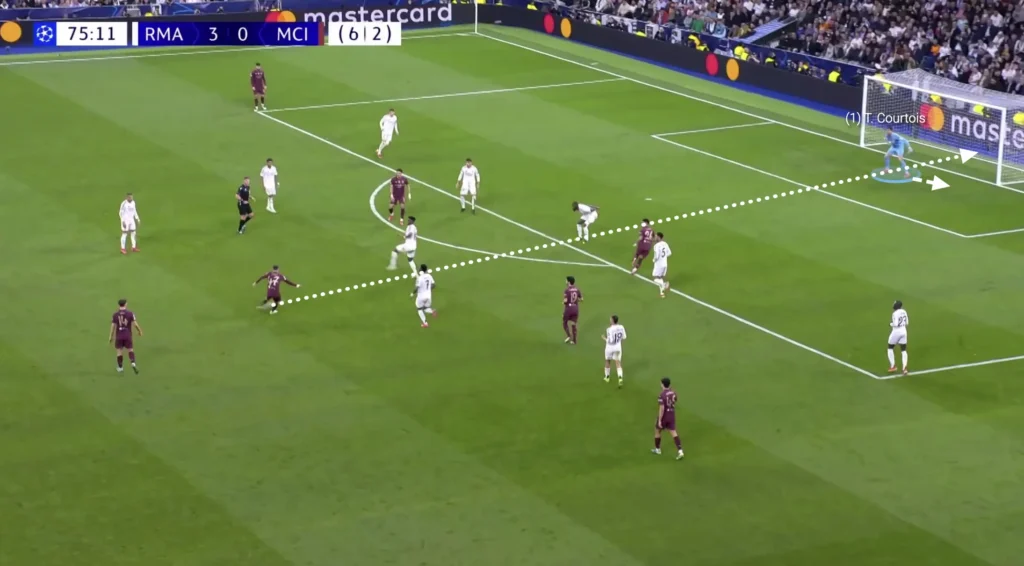
- Close-range shots: These moments test reflexes and compact body shape. Goalkeepers with explosive power and efficient set positions can react faster to deflections or quick combinations inside the box.
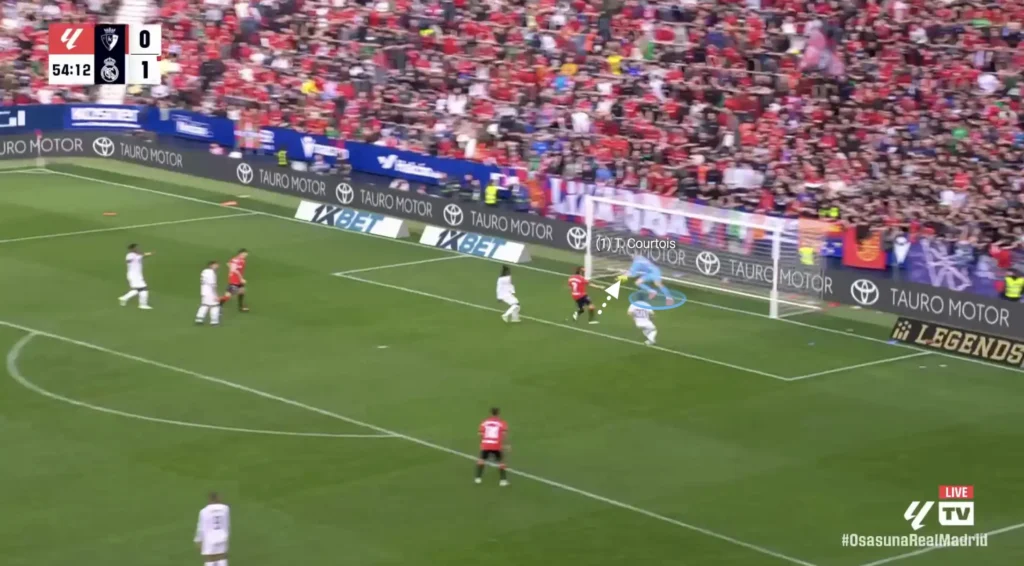
- 1v1 situations: Perhaps the ultimate test of composure and reading of play. Top goalkeepers don’t simply wait for the finish — they manipulate the striker’s decision by adjusting depth and timing, narrowing angles without overcommitting.
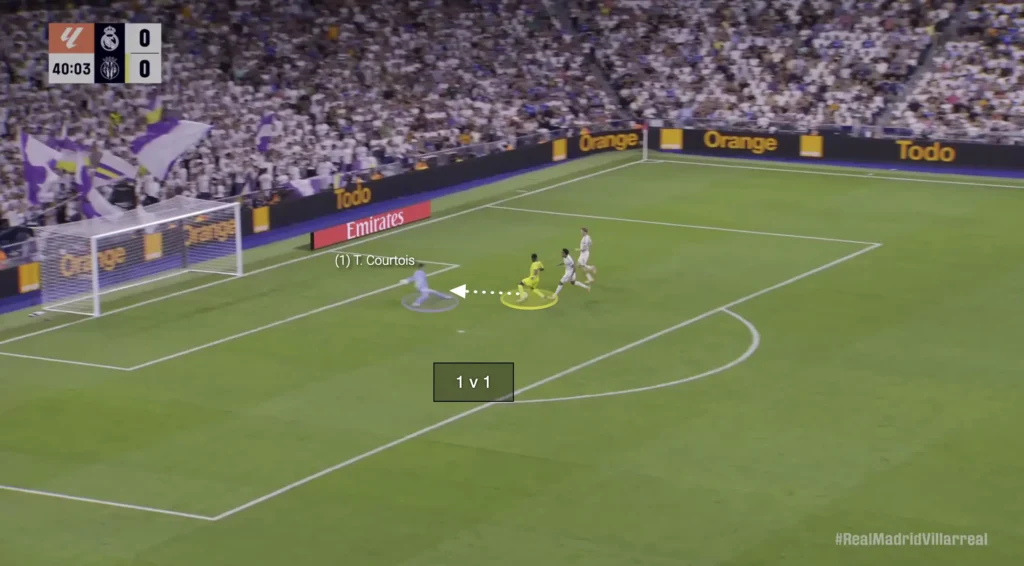
Scouting Focus
When analyzing shot-stopping, scouts should evaluate the goalkeeper’s footwork before the save, timing of set position, and ability to read shooting cues. Data such as post-shot expected goals (PSxG) can complement video analysis to assess how many goals a keeper prevents compared to the average.
2. Defending Crosses: Commanding the Area
Crosses remain one of the most chaotic aspects of defending. A goalkeeper who can dominate their box adds a sense of calm and control that can transform a team’s defensive stability.
Decision-Making and Positioning
The first question scouts should ask is not “Did they catch it?” but “Should they have come?” Effective cross defending is about decision-making — knowing when to claim, punch, or stay. Goalkeepers must read the flight of the ball early, assess traffic in the box, and decide whether they can reach it cleanly.
Technical and Physical Qualities
Key attributes include explosive acceleration over short distances, timing of take-off, and body control under contact. A dominant aerial presence relies as much on bravery and communication as it does on physical reach. The ability to organize defenders and claim high balls under pressure can relieve sustained opposition attacks — especially valuable against crossing-heavy sides.
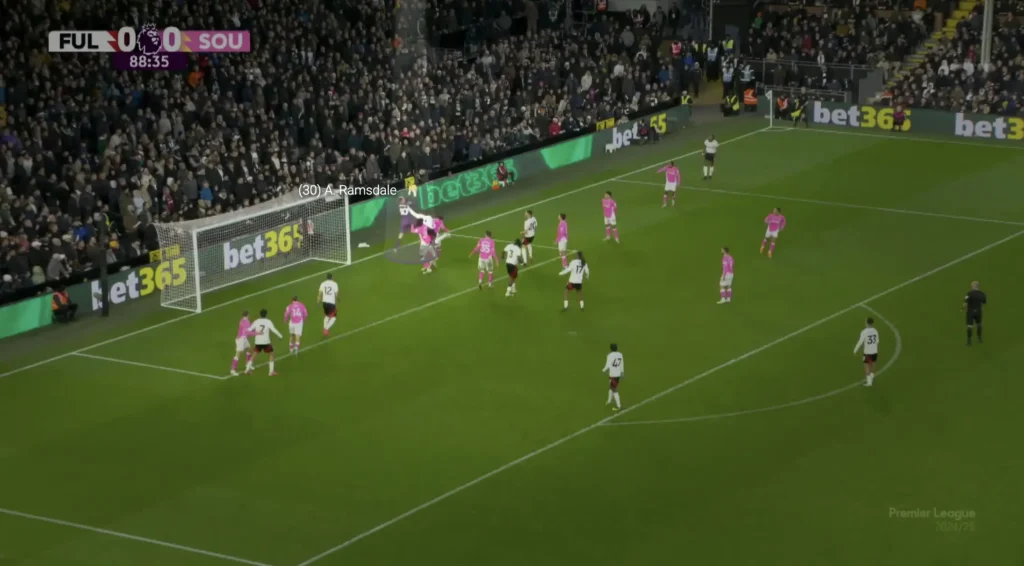
Context Matters
A goalkeeper’s cross involvement is highly dependent on team structure. In a deep defensive block, they face more aerial duels; in a high line, they must often defend floated passes behind defenders. Scouts should therefore consider the team’s defensive setup when evaluating this trait.
3. Defending Space in Behind: The Sweeper-Keeper Dimension
In teams that press high or defend on the halfway line, the goalkeeper’s role expands into that of a “defensive sweeper.” Managing the space behind the backline becomes a vital component of overall team compactness.
Anticipation and Starting Position
The key is positioning: goalkeepers must stay high enough to intercept through balls but not so far that they risk being lobbed. Reading the cues from opposing midfielders and strikers — particularly body shape before a pass — is essential.
A top-level example is Manuel Neuer, whose timing in rushing out has long been a benchmark for modern keepers. His ability to intercept long passes or delay attackers outside the box keeps Bayern Munich’s defensive structure intact and allows the backline to remain aggressive.
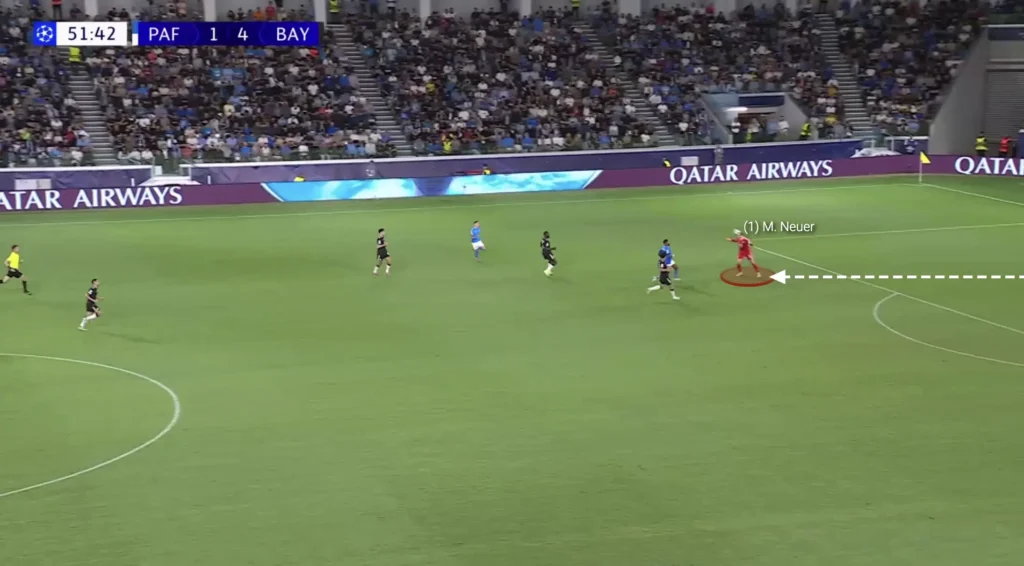
Scouting Indicators
Analysts should observe how frequently a goalkeeper leaves their box, their success rate in 1v1 recoveries, and their reaction speed to through balls. The best keepers are proactive — they don’t react after the ball is played, but position themselves to deal with it beforehand.
4. Offensive Contribution: From Last Line to First Pass
In the modern era, a goalkeeper’s influence doesn’t stop with defense — they are often the starting point of attacks. Their distribution determines how effectively a team can build from the back or exploit counter-attacking opportunities.
Build-Up Play
In possession-oriented teams, goalkeepers are effectively an eleventh outfield player. Their comfort under pressure, passing accuracy, and decision-making are key. The ability to play one-touch passes to beat the press, switch play to the opposite fullback, or find the pivot between lines gives tactical flexibility.
Goalkeepers like Ederson or Marc-André ter Stegen epitomize this role — both capable of splitting pressing lines with precision long passes or patiently circulating possession to draw opponents out.

Long Distribution and Counterattacks
Equally important is the ability to recognize moments for direct play. Whether through accurate long balls to exploit high defensive lines or quick throws to start transitions, this skill transforms defense into attack in seconds.

The best goalkeepers can sense when to slow the tempo and when to accelerate it — a subtle but vital part of modern tactical control.
Conclusion: Scouting the Complete Goalkeeper
Scouting goalkeepers today requires a holistic lens — one that merges physical, technical, and tactical evaluation within the context of team strategy. The best goalkeepers are those who balance risk and control, dominate their zones, and connect the defensive and offensive phases seamlessly.
From shot stopping to space management, from cross control to distribution, every action reflects both instinct and intelligence. For scouts and coaches, identifying these layers is the difference between signing a reactive shot-stopper and a proactive, game-controlling No. 1 — the type of goalkeeper that defines the modern era of football.
